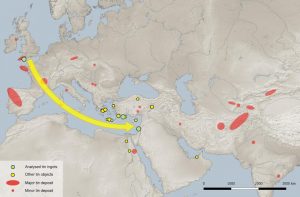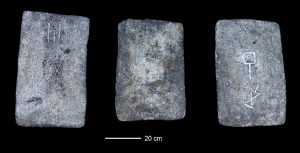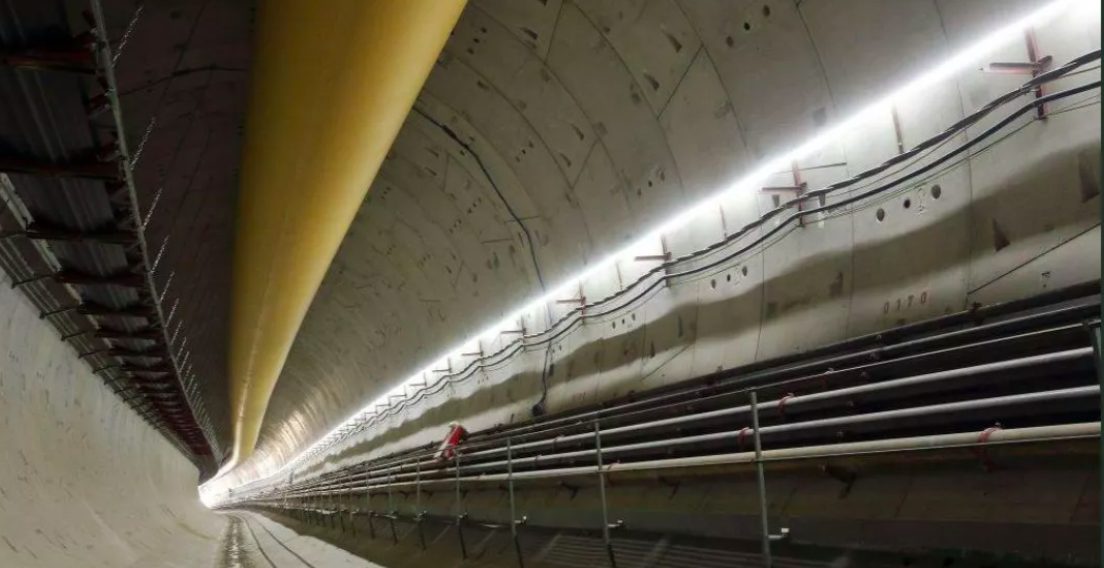The origin of the tin used in the Bronze Age has long been one of the greatest enigmas in archaeological research. Now researchers from Heidelberg University and the Curt Engelhorn Centre for Archaeometry in Mannheim have solved part of the puzzle.
Using methods of the natural sciences, they examined the tin from the second millennium BCE found at archaeological sites in Israel, Turkey, and Greece. They were able to prove that this tin in form of ingots does not come from Central Asia, as previously assumed, but from tin deposits in Europe.
The findings are proof that even in the Bronze Age complex and far-reaching trade routes must have existed between Europe and the Eastern Mediterranean. Highly appreciated raw materials like tin as well as amber, glass, and copper were the driving forces of this early international trade network.

(Tin deposits on the Eurasian continent and distribution of tin finds in the area studied dating from 2500-1000 BCE. The arrow does not indicate the actual trade route but merely illustrates the assumed origin of the Israeli
tin based on the data)
Bronze, an alloy of copper and tin, was already being produced in the Middle East, Anatolia, and the Aegean in the late fourth and third millennia BCE. Knowledge on its production spread quickly across wide swaths of the Old World.
Read more HERE
Ask me anything
Explore related questions





